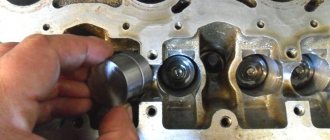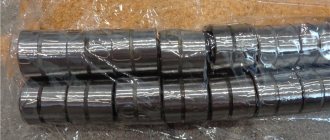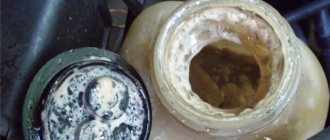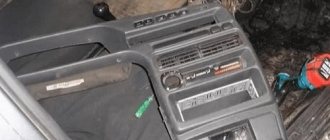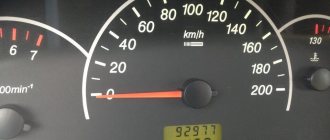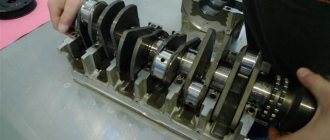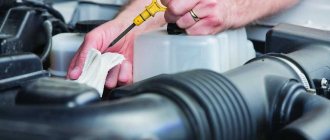Unstable idling is a common problem with internal combustion engines running on gasoline, diesel and gas. If the engine stalls at idle, the reason often lies in improper fuel supply, a faulty ignition system, or lack of compression. On injection engines, problems with sensors are added to the above.
Often, engine tripping at idle appears only on a cold engine or only on a warm one - this circumstance can make it easier to find the causes of problems. Our article will help you find out why the engine idles, why the idle speed fluctuates, and how to identify the malfunction. We will also analyze the most common reasons for uneven operation of the internal combustion engine for popular car models.
Cases of unstable operation of the internal combustion engine and attempts to eliminate them
During operation, the motor may twitch. Sometimes it is simply impossible to drive a car normally. Car service specialists give different reasons. So, some say that the gasket under the cylinder head is to blame for unstable operation. But subsequent replacement does not do anything. The second diagnostician claims that the valves are to blame. However, after adjustment there is no result again. The intake specialist insists that the carburetor/injector is no good and you need to buy a new one or clean it. But, naturally, the result is again unsatisfactory.
No matter what you do, the engine runs intermittently. But it turns out that in this case the problem was in the distributor connector - in the chip that is connected to the ignition distributor. Because of this, contact is broken. As you can see, unstable operation is not always associated with carburetors, spark plugs and other components. Most often the electrical wiring is to blame. We will go into detail about this.
Diesel engine
Reasons why an engine running on diesel fuel fails:
- Reduced compression in one of the cylinders. In this case, it drags so poorly that it sometimes stalls. This has virtually no effect on startup.
- Injector malfunction.
- Defective high pressure fuel pump (HPF).
- Faulty glow plug. When starting the engine on a frosty morning and with several spark plugs not working, there will also be problems (the first seconds after starting).
If the engine idles when cold and has a smoky exhaust, but when hot it doesn’t jerk, doesn’t stall and pulls well, most likely you will have to replace several (maybe only 1) glow plugs.
On diesel engines equipped with a “check engine” indicator, it is worth considering that not every malfunction lights up the “check engine” warning light. But in case of unstable operation of the motor, a burning “check” signals the need to read error codes.
Causes of unstable operation: ignition system
The first reason is faulty spark plugs. Even if a single spark plug does not work or does not work correctly, stable operation of the power unit will be impossible. At least one engine cylinder will misfire.
This type of engine operation is associated with a faulty ignition coil. This does not happen as often as various problems with spark plugs. But the problem cannot be ruled out. You can tell that something is wrong with the coil by looking at the spark. If its power has noticeably decreased, then as a result this leads to unstable and unstable operation of the internal combustion engine.
Many car enthusiasts will be very surprised, but often the engine runs intermittently not because of the carburetor or injector - the cause is a broken or damaged high-voltage spark plug wire. As a result, this leads to a decrease in engine power, unstable operation and other problems.
Let's return again to the cover and contacts of the distributor as one of the reasons for the unstable operation of the internal combustion engine. If your car has a contact ignition system, then if the contacts are damaged, the engine may run unevenly. You can forget about any stability “at idle”. There are also situations when a coal located in the center of the distributor cover on the inside burns out.
Gasoline engine with direct fuel injection
Injector ( from English injector which means injection or injection).
If the check light comes on when the injector is tripping, then the diagnosis will most likely show the detection of misfires, and not the reasons that cause them, so do not place high hopes on it. You don't need to be a good diagnostician to determine by the sound of the exhaust when it's hot why the check light came on in this case. It will not help to determine what caused it, that the injector is misfiring. A warning light, the so-called “check”, will most likely help if some sensor is faulty. Reasons why the injector is tripping:
- Faulty spark plug. Since the candle does not ignite the working mixture every time, it is unlikely that it will be wet or black with soot. In this case, look for a trace of breakdown on the insulator of the central electrode. It looks like a stripe drawn with a simple pencil along the insulator. Be sure to check the gap between the contacts of the spark plugs, since a gap that does not meet the standard can also cause interruptions in the operation of the cylinder and cause the engine to jerk when hot, as well as when not warmed up, pull poorly and even stall while driving.
- Faulty nozzle. Removing the connectors from the injectors while the engine is running. This way you can determine which cylinder is not working, but it may not work only because of the injector. Swap it with the injector of another cylinder; if now the cylinder where you put it does not work, it means it is out of order.
- Example of damage to a high-voltage wire
Breakdown of high-voltage wires or their tips. To identify or refute this reason, start by looking at the running engine in the shade. Sometimes, if the breakdown site is not close to the ground, a spark can be seen there. If this simple method does not bring results, turn off the engine and inspect the high-voltage wires and tips, looking for signs of breakdown - black dots with holes and black stripes with traces of soot.
- Reduced compression in one of the cylinders. The normal compression for an engine running on gasoline with an octane rating of 92 and higher is 12 kg/cm2; with a compression of 10 kg/cm2 or less, engine repair is necessary.
- Crankshaft sensor malfunction. This could be either a malfunction of the sensor itself, or a violation of the installation and fastening of the gear, as well as an incorrect gap between the sensor and the wheel. In this case, there will also be problems when starting the engine.
- Faulty wiring harness supplying control pulses to the injectors. Often, the harness moving due to vibration wipes the insulation of the injection control wires, which periodically short to ground while the engine is running. This causes interruptions in its operation and causes it to jerk and even stall at idle, and also pulls poorly while driving. To diagnose the latter, move the harness back and forth while the engine is idling, and if the engine jerks or stalls as a result, look for abraded insulation on the side of the harness that lies on the intake manifold or metal timing cover.
Power supply system and unstable engine operation
The reliability of the power system is a guarantee of smooth and stable operation of the motor. Let's look at typical faults that cause unstable engine speed.
If the engine runs intermittently, the reasons may be low-quality gasoline. Today, such fuel is sold very often at gas stations. If you fill your car with low-quality fuel, the engine speed will fluctuate and the car will jerk. Sometimes the car simply refuses to move. In this situation, experts recommend draining all fuel and checking the fuel for the presence of water. If the gasoline is completely drained, the entire line is pumped with a pump. It is also a good idea to flush the carburetor and replace the fuel filters.
A clogged fuel filter or carburetor is another possible cause. Debris in the carburetor can cause the engine to fail to start. If the channels or jets are clogged, the combustible mixture will not be able to fully enter the combustion chamber. This will immediately affect the operation of the internal combustion engine.
Interruptions in the operation of the internal combustion engine and electrical equipment: signs, solutions
If the engine runs intermittently and there is a feeling that the engine is about to stall, you need to pay attention to the tachometer. If at the moment of unstable operation the arrow twitches, then the cause of the malfunction should be sought in the electrical equipment. These are symptoms of short-term failures in the ignition system (no spark). If there is no tachometer, you can determine problems with the spark without it. The car jerks sharply when driving.
But it is not always possible to quickly detect the causes of a short-term loss of spark. Often, as noted above, these are bad contacts or the ignition coil. Another culprit is the capacitor and dirty contacts. If new contacts are installed and the motor runs unevenly, this means they are bad.
Distributor and capacitor
If the problem is in the capacitor on the distributor (and it can either fail completely or partially), then the engine will start and can operate properly and stably at idle speed. But while moving, the unit will twitch. This indicates a damaged capacitor. Remove the cover from the distributor, move the slider so that the contact opens. How is it checked? Turn the slider by hand to open the contact.
During the opening process, a spark should jump. If the capacitor is damaged, it will be blue and quite strong.
Also, the distributor may have insufficient or excessively large gap in the contacts. This causes unstable operation of the motor. The rod may wobble from side to side. It has cams and a slider installed. The contacts will open without much clarity, which will cause interruptions. The rod bushings or the entire distributor should be replaced.
High voltage wires
We have already discussed this reason above. If the engine runs intermittently (injector or carburetor, it doesn’t matter), then the first thing you should pay attention to is the wire connections. If the plug is covered with a green coating, you need to drop some oil on it and then wait. The lubricant corrodes the oxides and removes them. You can also unscrew and tighten the nuts that secure the wires to the ignition coil.
If this does not help, then by replacement you can easily find the failed part. But the difficulty is that if the ignition coil works partially, this can only be detected by replacing it with a obviously new one.
Working intermittently is not tripping
Do not confuse interruptions in engine operation with tripping, when one of the cylinders does not function. When the motor “trokes” there will be no twitching. In this case, bad traction occurs. But at idle speed there will still be twitching.
If the engine of a VAZ-2107 car runs intermittently, then the problem is definitely with the ignition system. If, when you sharply press the gas, the engine stalls, and then picks up and starts to pick up speed, then the reason is in the carburetor. The ignition system has nothing to do with it. Rarely, dips may be due to a faulty coil. The latter produces a weak spark.
Causes of uneven engine idling
Experts divide the main reasons for rough idling into two categories:
- problems with fuel or fuel system;
- problems with electrical and electronic controls;
A malfunction of the air system (intake) can be considered separately, but it is more appropriate to include it in the list of problems with the fuel system. The fact is that both of them are inextricably linked and affect the stability of the power unit in idle mode and under load.
- Fuel-air system and fuel. A poor fuel-air mixture is often the reason why the engine idles rough. Such a “poor” mixture is that there is too little fuel in it and too much air.
Excess air can be sucked in through damage in the line. For example, rubber fuel hoses of poor quality may initially have or acquire microcracks in their walls over time. Poor fixation of the hose also contributes to air leaks at the joints.
A more serious problem can be considered a problem with the idle air valve (also known as the idle air regulator, the secondary air regulator), which is sometimes called the idle air sensor. Owners of carburetor cars also know this part as the “solenoid valve.”
Excess air can also be sucked in through, for example, broken holes in the throttle valve axis on the carburetor. In this case, the problem may not become noticeable immediately: gasoline consumption will gradually increase, and interruptions in idling will appear.
- Poor quality fuel. Because of it, the idle speed also often “floats”. This phenomenon is especially strong when using so-called eco-gasoline. It contains a certain amount of ethanol. Ideally, this not only makes the exhaust gases less toxic, but also helps clean the fuel system.
However, in practice, drivers either deal with counterfeit fuel, manufactured in violation of technology, or use such fuel incorrectly. The fact is that for normal engine operation of the specified “eco” type gasoline in the tank there should be no more than 40-50 percent.
- The fuel pressure regulator (aka low pressure bypass valve) has failed. Its task is to maintain the required fuel pressure while the engine is running in any mode.
This breakdown is indicated not only by uneven engine operation at idle, but also by interruptions if you sharply press the gas pedal, a drop in power, and a strong increase in fuel consumption.
- The injectors are clogged (the channels are coked). Due to poor operation of the injectors, the fuel mixture is of inadequate quality in composition, which leads to disruptions in the operation of the power unit in different modes and increased fuel consumption.
- Air damper malfunction. This is usually a mechanical interference, which also leads to the formation of a poor-quality fuel-air mixture. As already mentioned, this causes the engine to run unevenly.
- The idle speed on the carburetor is not adjusted. In this case, under load the engine will operate normally, but at idle it will sometimes jerk, and at the same time there may even be a slight popping sound in the muffler. A relatively simple problem that you can deal with yourself by tightening the required adjusting screw.
Electrical problems
First of all, let's start with the ignition system. More precisely, the cause is too large a gap between the electrodes on the spark plugs.
Here the symptoms will be almost the same as with poor idle speed adjustment on the carburetor. The problem can be easily resolved by reducing the gap between the electrodes.
Unstable engine operation without load can also be caused by engine tripping. That is, one of the cylinders is not working.
We also recommend reading the article about why engine speeds fluctuate at idle. From this article you will learn about the main causes of idle speed fluctuations, as well as ways to diagnose the problem.
In other words, the fuel-air mixture does not ignite. In turn, this phenomenon is due to a weak spark on the spark plug or its complete absence. Low compression in the cylinder is also possible due to damage, burnt valve, etc.
Gasoline pump
It happens that the fuel pump does not pump fuel well, but in quiet mode there are no failures.
As soon as you press the gas hard, the car will start to twitch, but there will be no strong jerks. The engine will stall and then pick up again. And if you release the pedal and press it again, the motor will run smoothly again. In this case, it is recommended to replace or repair the fuel pump or its rod. Why does the engine run rough? He runs out of gas because the fuel pump is not working efficiently.
Carburetor cars
If the engine idles intermittently, this may indicate that the idle setting in the carburetor is off. It is shifted towards a leaner fuel mixture. In this case, it is recommended to adjust the idle speed to 800-900 rpm on the carburetor.
It is also possible that the solenoid valve may fail. In this case, the engine will operate normally only with the choke fully extended. If you remove it, the engine will immediately stall.
Unstable engine operation is also associated with clogged carburetor jets or idle passages. Here the fuel lacks sufficient air. This problem can be quickly solved by cleaning the carburetor as a whole and the jets.
If there is excess air leaking in, this also leads to the formation of a lean mixture. As a result, the engine idles intermittently. Check the inlet pipes for leaks.
Checking various systems to find faults
To identify the causes of uneven engine idling, it is necessary to diagnose a number of systems. First of all, you should check the air intake pipes. In those cars where the filter is located separately in the airbox design, it is necessary to check the serviceability of all its elements.
It is imperative to check the serviceability of the clamps and the reliability of the connections of the air box hoses. It is necessary to check the degree of contamination of the air filter. It must be completely replaced if the rays of light from a flashlight do not pass through it. After replacing the filter, you should check its correct position, how tightly the cover fits and the clamps are evenly installed.
Next, you should carefully inspect the pipes in the direction of the throttle valve. In this case, all clamps and clamps should be properly tightened. In a design with a built-in air volume flow sensor, it is necessary to check its serviceability, reliability of connections and contacts.
Rough idle may be caused by air leaking through cracks formed at the bottom or between the bends of the corrugated rubber pipes that serve to suck in and supply air. To identify them, it is necessary to disconnect the pipe from one end, carefully bend it and carefully inspect it from all sides. Detected cracks must be sealed, which will not only prevent air leaks, but also stop dust and dirt from penetrating into the pipeline.
During operation at idle speed, cracks open, the engine receives an excess of air, and it begins to gain speed on its own. When the cracks close, the speed drops sharply. The idle air control system will respond to this and reopen the pipeline. The engine speed again increases sharply, and this will be repeated constantly, making idling uneven and unstable.
Another option for checking the health and integrity of the air flow path is to spray carburetor cleaner near the intake manifold. If immediately after such dispersion the engine speed changes sharply, this means that particles of the cleaning agent have entered the system, and the integrity and tightness of the pipes is compromised. It should be remembered that this test option should be carried out with the utmost caution, since spraying any substances near the distributor is quite dangerous.
Injection engine
Modern injection units are more technologically advanced, but there are problems with them too. Often the malfunction is associated with a breakdown of a sensor. There are also problems with spark plugs and air supply (there is a mass air flow sensor on the pipe here). The latter can be sucked into the system “from the outside.”
Also, do not rule out problems with the wires. Often the idle speed sensor or USR valve fails.
Throttle position sensor malfunction.
The throttle position sensor has a direct connection with the idle air control sensor. I will tell you below how to find signs of a faulty throttle position sensor. What is a throttle position sensor and why is it needed? TPS monitors by what percentage the throttle valve opens. In fact, this is an ordinary variable resistor, you can compare it with the volume control on your grandmother's TV.
As a rule, it operates from 0 volts to 5 volts, because the change in voltage on it is monitored by the ECU processor. Almost all processors used in automotive ECUs are five-volt. Therefore, the throttle position sensor operates up to 5 volts, since the processor cannot measure voltage higher than its supply. Now let's look at the connection between the throttle position sensor and the idle air control. When we press on the gas pedal and the throttle position is not zero, the idle speed control is not activated, the ECU simply turns it off. In one of the articles I talked about why the ECU turns off the injector.
Now attention. As soon as we release the gas completely, the throttle valve closes, accordingly the throttle position sensor reads 0%. And then the ECU turns on the idle speed control so that the car does not stall. So until the position sensor reaches 0%. The ECU will not turn on the idle speed control feature. Now do you understand what the throttle position sensor has to do with the idle air control valve ?
If you have problems with idling, or the car jerks when revving, you should definitely check the operation of the throttle position sensor. As a rule, it comes with three wires, +5 volts, reference ground and control. How to check the throttle position sensor? To do this you will need a diagnostic program. By pressing and releasing the gas pedal, we can see in the diagnostic parameters a change in the percentage of the throttle position. A prerequisite is that when the pedal is released, the position sensor should read 0%. This manual does not apply to vehicles with electric throttle.
If the throttle position sensor shows at least 1%, the ECU will not turn on and will not supply power to the idle air control. As a result, the car will stall, the speed will jump and hang, and there will be no idle.
I have seen more than once when “auto electricians” pulled the throttle cable while trying to adjust the idle speed or tightened the locking bolt on the throttle assembly. The factory specially places seals on these units so that no one can twist them. But the playful hands of incompetent auto electricians constantly get in there. If an electrician performs such actions, this indicates that he does not understand anything about the operation of an injection car. Stay away from such masters! Also, the reason when the position sensor does not go to zero may be a poor reference ground going to the throttle position sensor.
Interruptions on a cold engine
Usually the car starts and then stalls. Then the next time you turn the key, the engine runs normally. In the first case, the fuel leaves the fuel pump into the tank, and there is already fuel in the carburetor float chamber. When you turn the key, the engine starts and runs normally, but the pump has not yet settled down to pump gasoline into the carburetor. Because of this, a cold engine runs intermittently.
The carburetor can also prepare a mixture that is too lean or too rich. In injection units, the reason is in the nozzle, which “when cold” delivers the wrong portion of the mixture to any cylinder. The solution to the problem is cleaning at the stand.
Summarize. As you can see, the motor is unstable for various reasons. First of all, you need to pay attention to the intake and ignition system. There may be a problem with some wiring or sensor.
Carburetor engine
The carburetor, of course, can be the culprit that the engine jerks and stalls when hot. The carburetor may overflow, meaning the fuel level in the float chamber is too high. This could be due to:
- Incorrect fuel level adjustment.
- Loss of float tightness will cause the carburetor to overflow.
- The mechanism may have a defective needle valve.
- The fuel pump spring is too tight (the carburetor will overflow due to the needle valve not being able to handle too much fuel pressure).
- The gasket between the fuel pump and the heat-insulating spacer is too thin (the pump will produce too high a pressure, which will cause the carburetor to overflow). The average cost to fix such a malfunction is very inexpensive, so not every workshop will bother with it. The lower the average troubleshooting cost, the higher the likelihood that you will have to deal with it yourself.
- The carburetor over-riches the mixture and the engine jerks and sometimes stalls due to a rupture of the economizer diaphragm.
The carburetor itself may not be to blame for the engine jerking and stalling. But this does not mean that the carburetor can be excluded from the list of possible causes for this.




